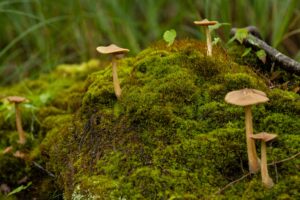By Anne Kozak
From the Mount Desert Islander, March 18, 2016
PHILADELPHIA — The exhibit inspired by Acadia National Park and public and private gardens on Mount Desert Island received The Philadelphia Trophy for best use of color at the prestigious Philadelphia Flower Show, the largest flower show in the United States.
This year’s flower show celebrated the National Park Service’s centennial, and this particular exhibit, designed by J. Downend Landscaping Inc. of Crum Lynne, Pa., honored Acadia’s centennial.
Using a replica of a trail sign, J. Downend listed six gardens on MDI – the Wild Gardens of Acadia, Abby Aldrich Rockefeller Garden, Asticou Azalea Garden, Turrets’ Seaside Garden, Charlotte Rhodes Butterfly Garden and Garland Farm.
“When immersed in the often jaw-dropping natural beauty of Acadia National Park, it may seem superfluous to seek out manmade gardens,” wrote the exhibitor in text accompanying the exhibit. “But these on Maine’s Mount Desert Island gild this already stunning landscape.”
Friends of Acadia’s Development Director Lisa Horsch Clark, who attended the flower show, called this exhibit “gorgeous and one that replicated plantings found in public and private gardens on the island.”
While the exhibit does not appear to feature native plants such as those found in the Wild Gardens of Acadia, where only plants native to the island can be displayed, the exhibit does showcase tulips, daffodils, lilacs and lupine, plants and shrubs found in private gardens. A large number of MDI summer residents live in or have long ties to the Philadelphia area.
The idea of celebrating national parks did not originate within the National Park Service, said Acadia’s Chief of Interpretation Lynne Dominy, but rather came from the National Park Foundation, a foundation that supports various park initiatives through philanthropy. At the beginning of this century, David Rockefeller Jr. was the foundation’s citizen chair.
Look for other photos by Horsch Clark on Friends of Acadia’s Cobblestones Blog which can be found on its website. In addition to more pictures of the exhibit honoring Acadia, she included pictures of exhibits highlighting other national parks. The Yellowstone exhibit, for example, displayed plants and animals that returned after the 1988 fire which burned over one million acres in Yellowstone and on nearly federal lands.
“We’re pleased that so many people partnered in celebrating Acadia and the National Park Service’s centennial at both the national and local levels,” said Dominy. “What’s important is that the 500,000 visitors expected to attend this flower show will get to see a diversity of plants found not only in natural environments but also in those created by people.”
In addition to the exhibits, Acadia and other parks produced videos for the flower show.
Acadia’s video featured the importance of preserving natural features like cobble beaches and using native plants both to protect natural ecosystems and to provide animals with cover, food and nesting areas.
 Join
Join Donate
Donate Acadia National Park
Acadia National Park


